▲ Click the blue text to follow us!

In the recently concluded year of 2024, the demand for surgical robots in the medical industry has grown exponentially, but the existing production capacity is far from keeping pace with market development. The demand for surgical robots in orthopedics alone has seen several-fold growth, with increased needs not only for primary hip and knee surgeries but also for minimally invasive hip and knee revision surgeries and robotic systems. Additionally, the demand for surgical robots in hand and foot, shoulder and elbow, and arthroscopy is gradually increasing. The demand for soft tissue surgical robots in the medical field is even more robust, with all clinical departments, including neurology, pediatrics, aesthetic medicine, interventional gastroenterology, ophthalmology, cardiothoracic surgery, ultrasound, chronic kidney disease, radiotherapy, nuclear medicine, sports medicine, otolaryngology, and urology, showing significant needs for soft tissue surgical robots.

The Value of AI Surgical Robots
The entry of AI surgical robots into the fields of healthcare, nursing, and elder care will bring about significant transformations in related industries. However, this transformation is not about replacing doctors, nurses, and caregivers, but rather about generating greater benefits through human-machine collaboration. With the assistance of AI surgical robots, surgeons can more easily perform complex surgeries.
01
Insufficient Surgical Resources in China Can Be Enhanced with AI Surgical Robots
Currently, the number of doctors capable of performing surgical operations in China’s medical industry is very limited. According to the “2022 China Health and Health Statistics Yearbook,” the number of surgeries performed on hospitalized patients in China reached 75.738 million in 2021. Estimating based on an average of 200 surgeries per surgeon per year (a rough industry standard), approximately 378,700 surgeons participated in surgeries in 2021, accounting for only 8.8% of the total number of practicing physicians and assistant physicians (4.287 million) that year.
The limited number of surgeons has resulted in a low surgical penetration rate in China, making it difficult for many patients to receive timely surgical treatment. For example, as of January 2024, Pubmed data shows that the penetration rate for knee replacements in China is 13.5 cases per 100,000 people, compared to 258.7 cases per 100,000 people in the United States, which is more than 19 times that of China. However, with the assistance of AI surgical robots and artificial intelligence, the surgical medical resources can multiply based on the existing foundation. This is because AI surgical robots can not only reduce the difficulty of surgical operations for doctors but also decrease the number of medical staff required for each surgery, which typically requires 7-8 medical personnel to collaborate. In the future, with the support of AI surgical robots, a surgery could be completed by 1-2 doctors and 3-5 robots. Therefore, with the assistance of AI surgical robots, the output of the medical system will increase exponentially, representing the greatest productivity enhancement for China’s healthcare system.
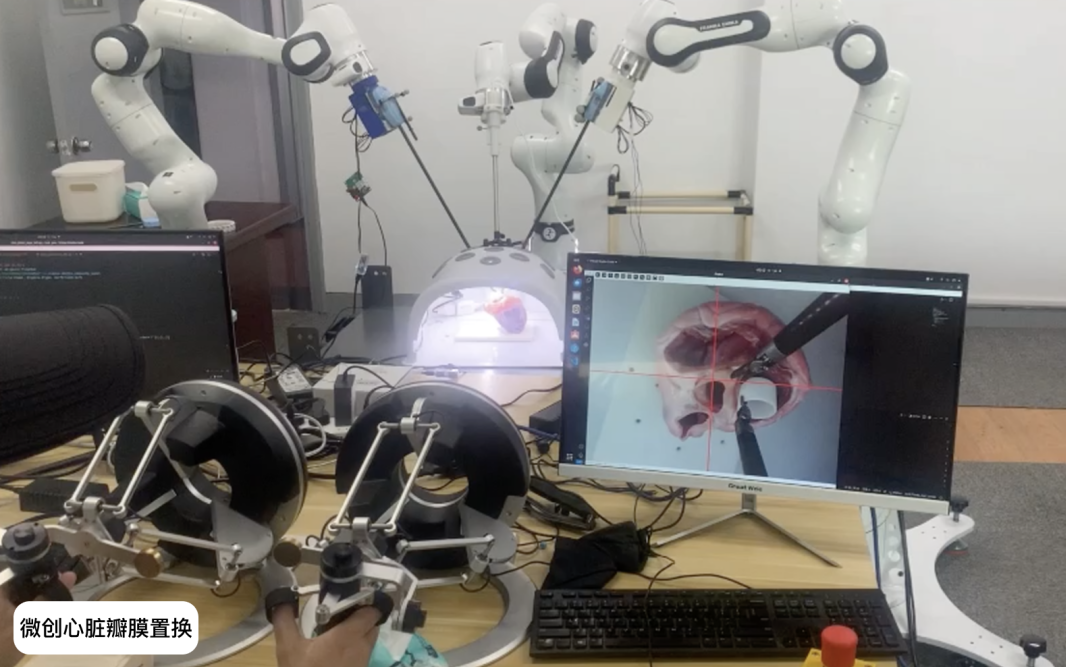
Figure 1 Heart valve replacement experiment assisted by AI surgical robots
Some hospitals in China are already using AI surgical robots to perform complex surgeries, and thousands of clinical cases have shown that the quality and outcomes of surgeries performed by junior doctors with the assistance of AI surgical robots are comparable to those performed by senior doctors. For senior doctors, the assistance of AI surgical robots can also significantly improve the quality and safety of surgeries.
02
AI Surgical Robots Can Already Perform Complex Surgeries
Most people still associate surgical robots with the past, where they could only perform the most basic surgical operations. If surgical robots from 20 years ago were akin to a child who could only hammer nails into bones, today’s AI surgical robots are comparable to skilled surgeons, capable of suturing blood vessels and valves in the heart, and even autonomously performing surgeries that are difficult for senior doctors to master. Thanks to advancements in related technologies, AI surgical robots have now surpassed the physiological limits of human eyes and fingers in terms of precision and efficiency. For instance, cardiac replacements or suturing can now be performed without incisions, and such surgeries can be autonomously completed by AI surgical robots.
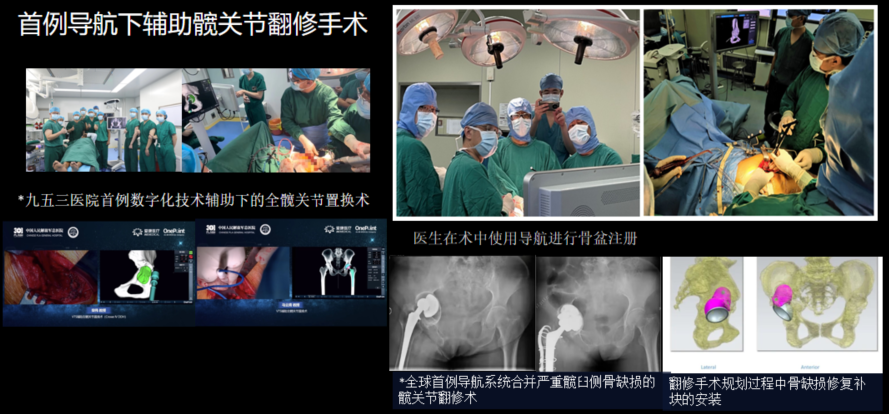
Figure 2 Surgical robots assisting in complex surgeries
In the foreseeable future, various surgeries will be assisted by AI surgical robots. Due to the reduced difficulty of surgeries, grassroots hospitals will also be able to perform complex surgeries, and patients will not need to travel long distances to Beijing or Shanghai to queue for surgeries. The medical resources of grassroots hospitals can be fully utilized, and large tertiary hospitals will not need to operate under excessive pressure.

The Market Prospects for the New Generation of AI Surgical Robots Are Promising
In terms of technology, the new generation of force-controlled soft tissue operation platforms and AI autonomous navigation surgical systems provide a strong foundation for the advancement of AI surgical robots. In fields such as neurology, cardiology, and ophthalmology, the requirements for the robot’s vision, force control, and response speed are higher. In these fields, not only are the performance requirements for robots higher, but the surgical operation skills required are also more numerous and complex, far exceeding those of laparoscopic and orthopedic surgical robots. Although the cost of developing the new generation of AI surgical robots is high, in the long run, robots equipped with force-controlled soft tissue operation platforms and AI autonomous navigation surgical systems can be widely applied in neurology, cardiology, ophthalmology, and other fields, serving nearly ten million patients annually, with a potential market space that could reach 100 times the current size.
01
The Importance of Force-Controlled Soft Tissue Operation Platforms
In reality, most doctors cannot rely solely on visual judgment when performing surgeries, making tactile feedback and experience very important. Especially in minimally invasive surgeries, the visible range for doctors is only 1% of the organ, and important nerve and vascular structures cannot be directly seen from imaging devices; doctors must rely on their sense of touch and experience to complete surgeries. This is also true in daily nursing, for example, during the pandemic when nurses could not see the shape and depth of the nasal cavity while sampling, relying solely on tactile feedback to judge the sampling depth. Moreover, relying solely on vision to complete surgeries and nursing in clinical settings is unsafe; when tissues move, a lack of force control can cause organ damage and even safety accidents. Therefore, for AI surgical robots, the combination of soft tissue force control and large model technology is the correct technical route.
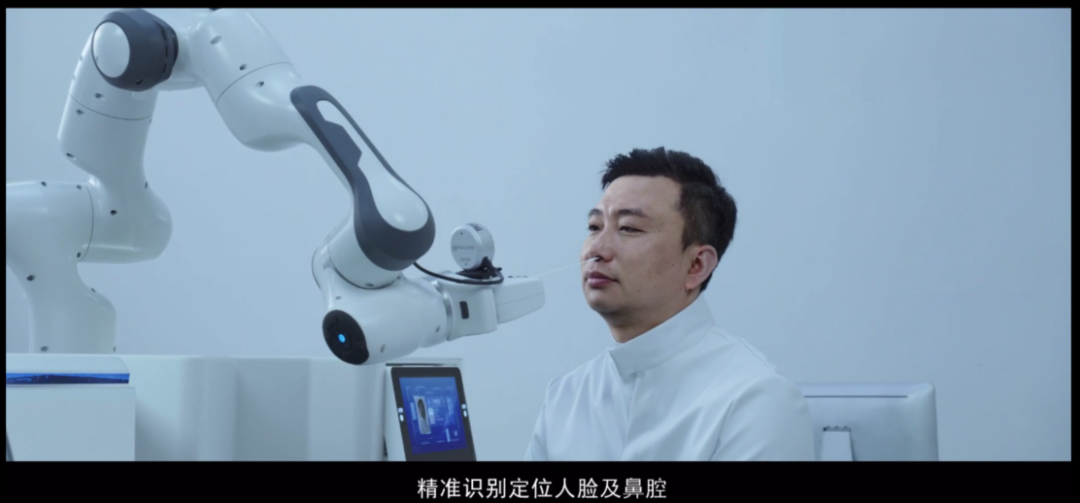
Figure 3 Robots with force control technology autonomously perform nasal swab sampling
02
High Demand for Affordable AI Surgical Robots
The future of healthcare in China will be drastically different from the past. The current healthcare system is at an unprecedented turning point, with the elderly population in China expected to reach 400 million by around 2035, leading to a surge in demand for medical services. If the current supply capacity of the healthcare system remains unchanged, there will be a significant shortage of medical service resources. To address this situation, it is urgent to deploy safe and affordable AI surgical robots in grassroots medical institutions to assist in clinical treatment and nursing services. For example, fully autonomous AI robots can help nurses perform dialysis on patients and assist doctors in suturing blood vessels, during which medical staff only need to supervise without manual operation, thereby improving treatment efficiency and saving labor costs. Relevant companies need to develop various types of AI surgical robots for different medical scenarios, such as orthopedics, radiotherapy, and dental implants. In the next three to five years, AI surgical robots will become common medical devices deployed in grassroots medical institutions to assist medical staff in surgeries and nursing.
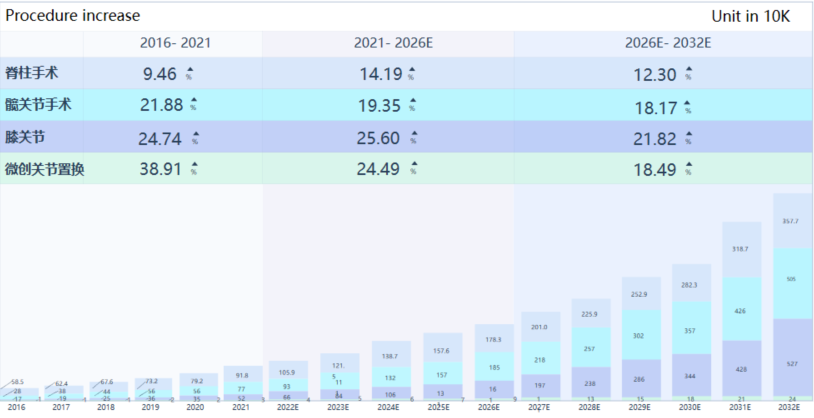
Figure 4 Forecast of the growth rate of surgical volumes in various departments from 2016 to 2032
In the foreseeable future, even high-difficulty surgeries such as cardiac or neurological procedures can be assisted by AI surgical robots with a certain degree of autonomy. Before that, they will be trialed in low-risk areas such as hair transplantation and rectal procedures, and once stabilized and reliable, they will be introduced into cardiac, neurological, and ophthalmological fields. The first step is to allow AI surgical robots to perform simple tasks in clinical settings, such as blood sampling, preoperative disinfection, and wound suturing. Based on this, AI surgical robots with higher technical requirements will be developed, such as laryngoscopes and anesthesia machines.

AI Surgical Robots Will Empower Surgical Medicine
Achieving Breakthrough Developments
In the long run, the precision of surgeries that AI surgical robots can perform in the field of surgical medicine will far exceed that of humans. Surgical medicine will rapidly advance as robots break through the ceiling of human precision and efficiency, providing opportunities for blind patients to regain their sight and paralyzed patients to regain movement. Theoretically, the improvement of certain disease states or functional recovery can be treated through three steps: first, excising the diseased tissue; second, implanting bio-artificial organs (such as artificial retinas, neural modulation devices, etc.); and finally, achieving functional repair through tissue engineering or regenerative medicine technologies. This process requires suturing thousands of blood vessels or implanting thousands of electrodes into every nerve in the spinal cord, which could take days for manual operation, but robots can complete it in just a few hours. In the future, surgical robots equipped with force-controlled soft tissue operation platforms and AI autonomous navigation surgical systems will surpass the experience and skills of surgeons, becoming the most valuable medical devices, present in both large tertiary hospitals and grassroots medical institutions.
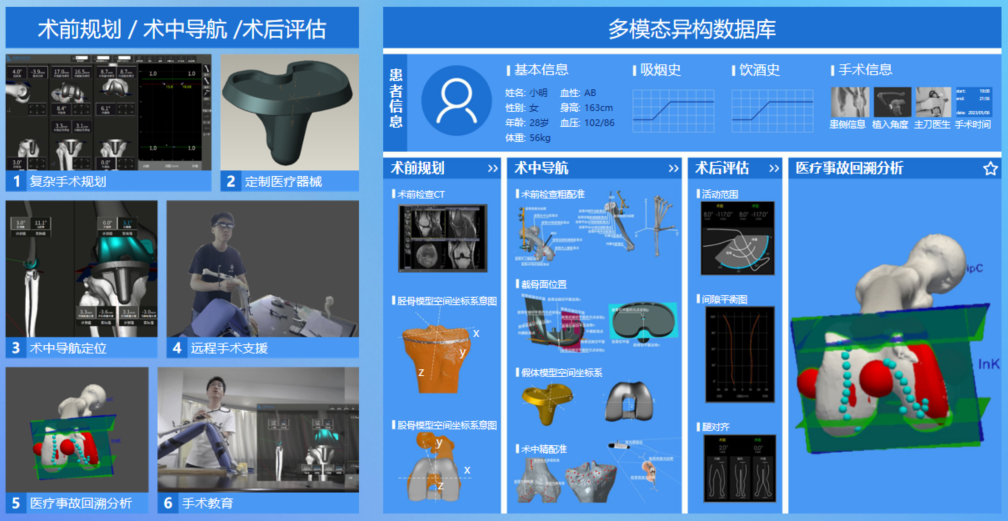
Figure 5 AI robots participating in the entire surgical treatment process

Current Bottlenecks Facing AI Surgical Robots
01
High Prices Hinder Popularization, Urgent Need for Comprehensive Localization
As time goes on, every hospital in China will be equipped with AI surgical robots. Currently, the main bottleneck for popularization is the price; imported Da Vinci surgical robots cost about 20 million yuan per unit, with operating fees around 25,000 yuan per procedure, far exceeding the affordability of medical insurance funds and patients. However, through comprehensive localization of production and supply, the cost of AI surgical robots can be reduced to one-tenth of that of imported products. It is expected that by 2027, a large number of affordable surgical robots will be launched domestically.
02
Supply Chain Constraints on the Development of Force Control Functions in Surgical Robots
Producing force-controlled soft tissue robots requires cooperation from the supply chain. Currently, the domestic supply chain can only support the production of orthopedic and laparoscopic surgical robots, but these types of surgical robots do not have force control functions. In the future, surgical robots for ophthalmology and cardiothoracic surgery will require entirely new motors and transmission technologies. Although motors and transmission technologies in the aerospace and semiconductor industries have high precision and performance, they are difficult to meet the requirements for lightweight and miniaturization in medical applications. Therefore, it is necessary to redesign ultra-small, high-precision motors. The probes and manipulators used by surgical robots to operate on soft tissues will be the most precise electromechanical devices ever, with each probe equipped with four to six micro-motors with diameters of less than 1mm. Their precision and flexibility will far exceed existing medical devices and surgical tools. Such AI surgical robots will be able to peel off the cornea and tie knots with threads as fine as 0.01mm, completing surgical operations with greater dexterity and precision than human hands.
In the future, surgical robots equipped with force-controlled soft tissue operation platforms and AI autonomous navigation surgical systems will become the darlings of the medical industry. Moreover, beyond the medical field, the capabilities of AI surgical robots can also be widely applied in fields such as semiconductors, agriculture, veterinary medicine, elder care, sanitation, construction, and military industry. Investing in motors, servos and transmissions, sensors, high-bandwidth chips, precision machining, and high-performance computing will yield fruitful results in the next five years.
【References】
【1】”2022 China Health and Health Statistics Yearbook” National Health Commission of the People’s Republic of China [M]. Beijing, 2022.
【2】National Health Commission: As of the end of 2021, the number of physicians in China has exceeded 4.28 million [N]. China News Network, 2022-08-25 [2025-02-21]. https://www.chinanews.com.cn/gn/shipin/cns-d/2022/08-25/news935872.shtml
【3】2024 China Orthopedic Implant Market Welcomes Rapid Development Opportunities [EB/OL]. Yixintong Headlines, 2024-01-30 [2025-02-21]. http://mp.weixin.qq.com/s?__biz=Mzg5NzYzMTAxMw==&mid=2247515483&idx=2&sn=2a3910c05af3f0d7788c838ff8fa0d7e&scene=0
【4】National Health Commission: By around 2035, the elderly population aged 60 and above will exceed 400 million, accounting for more than 30% [N]. Guangming Network, 2022-09-20 [2025-02-21]. https://m.gmw.cn/baijia/2022-09/20/1303147818.html
Contributed by: Liu Yue, Associate Researcher, Research Institute No. 5; Liu Fangde, Hangzhou Huxi Yunbaisheng Technology Co., Ltd.
Editor: Jiang Xiaohang
First Review: Jiang Xiaohang; Second Review: Li Yan; Third Review: Yang Lingjiang
Disclaimer: The article aims to convey more information and promote knowledge sharing online, without any commercial purpose. If there are any copyright disputes regarding papers or images, or any other issues, please inform us through the backend message, and we will handle it properly.
Recommended Reading:




“What Should Cities Do” WeChat Official Account
Submission Email: